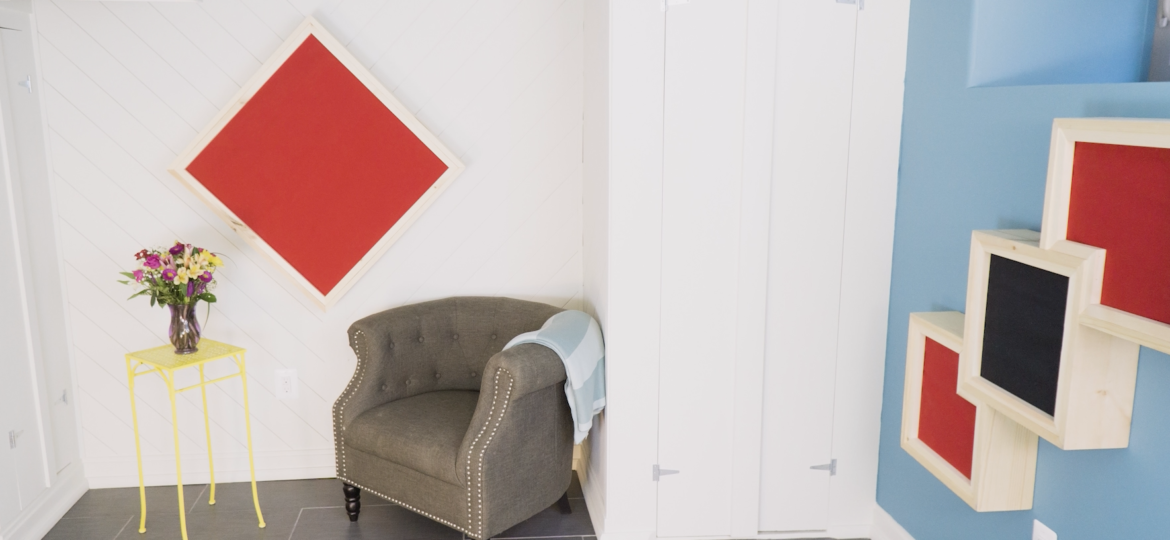
A finished basement is a thing of beauty. The transition from cold, concrete cellar to a sweet spot for everything from relaxing to working out is awesome. In this video, I touch on some tips to make your basement drier, safer and QUIETER.
Dry. This basement required a perimeter drain to get the water—like, liquid water seeping up through the concrete and draining down the walls—out. If this is the case for your build, pay special attention to this portion of the project. There is no amount of paint or caulk that can substitute for it.

We also used a vapor barrier between the foundation wall and the new wall studs. It’s critical for stopping humidity flowing through the foundation and into the room and for keeping mold growth at bay.
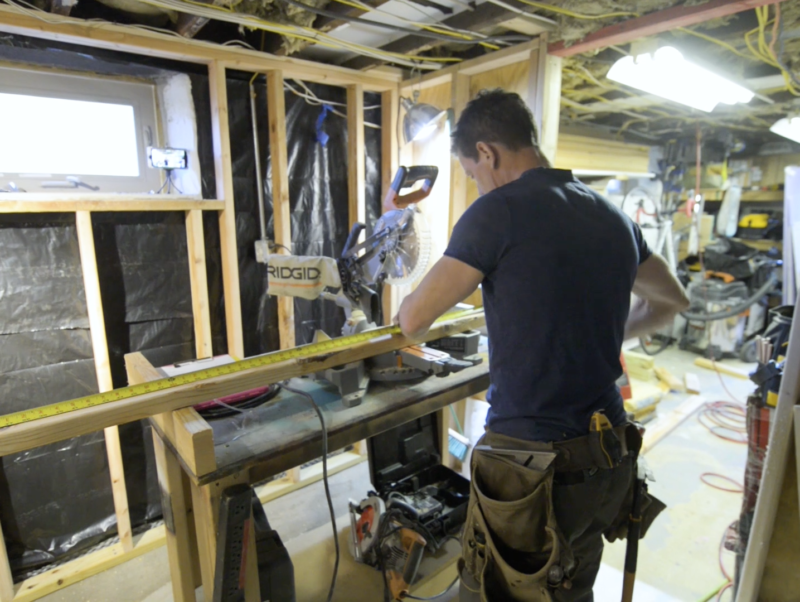
Framing. Get 10 carpenters in a room and you’ll get 12 methods for framing basement walls. The reason is, it’s tricky. For my money, I prefer to set my top and bottom plates then dig in and go stud-by-stud. The older the house, the slower the process. But, it works. There are so many complications like lumpy floors, pipes, ducts, beams, wires, and so on that I find that it’s faster to move slowly and methodically stud by stud. You can watch my how to frame basement walls for a finished basement video here. Workbenches help immensely too. I put mine on wheels so I can roll them around the room.
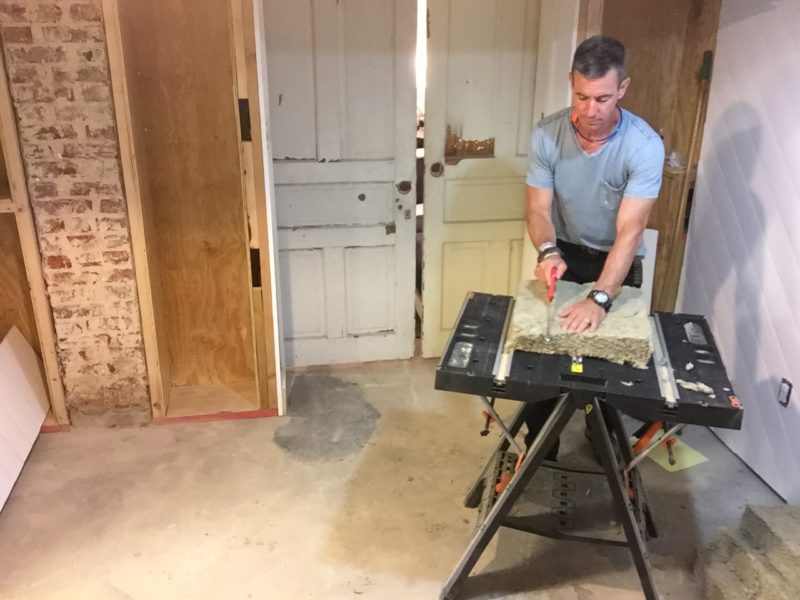
Insulation. I use the awesome and mighty ROCKWOOL insulation whenever I can. It’s friction fit (no staples), goes in fast, is low dust, cuts easily—as in, I can stand up at a work table and cut it….looooove—and it has sound deadening capabilities other types of insulation simply don’t have much of. It can even be used for fireblocking in many cases. It’s awesomeness and you can watch my how to insulate a basement video for more on it here. I love this stuff.
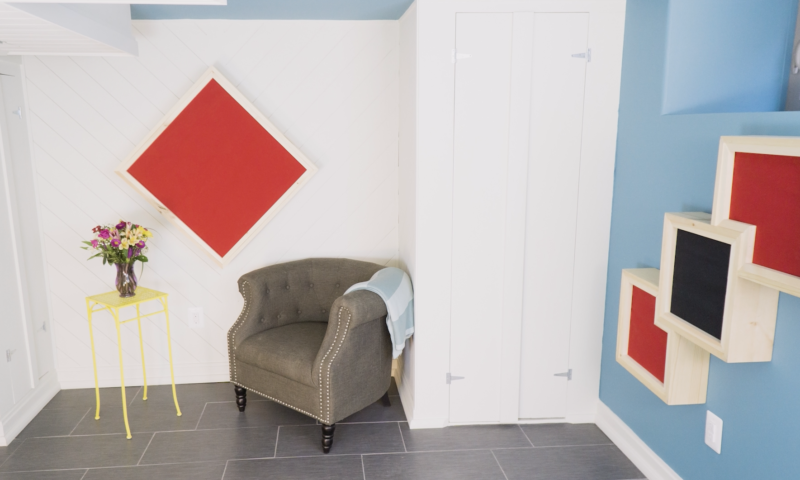
Shiplap. Design-wise basements can be tricky. It depends on the space of course, but they can be a featureless mass of drywall quite easily. In this reno, there are smaller spaces adjoining each other and divided by doors, so I went with shiplap in a chevron in this space. It adds detail and depth without overpowering the room. You can watch my how to install shiplap video here.
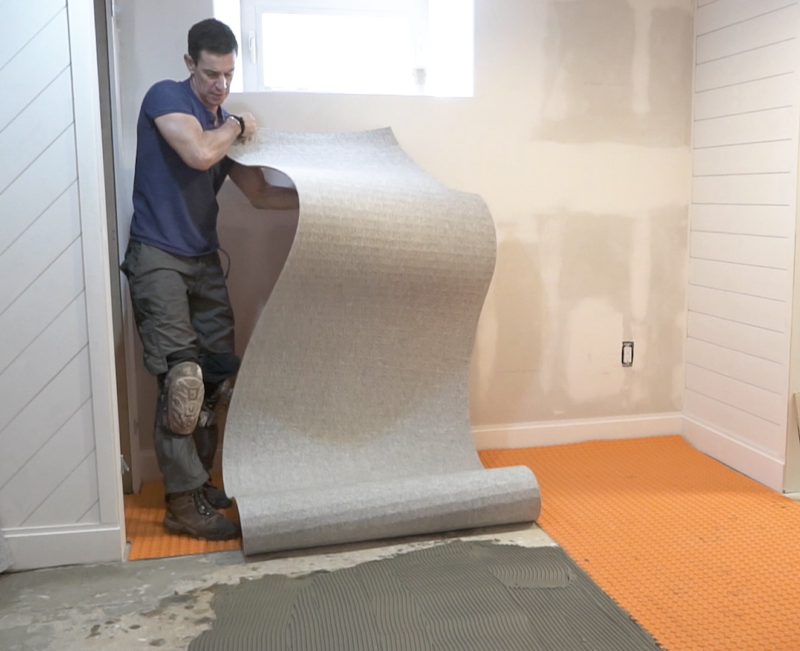
Warm Floor. Even in a finished basement with heat, the floor is always going to be about 54-degrees. That’s a relief in a roasting July, but not so much in a freezing January. Adding Schluter’s Ditra Heat floor warming system under the tile makes the room a completely different—and I mean better times 10—space. I adore it. You can watch the how to install Schluter Ditra Heat video here.
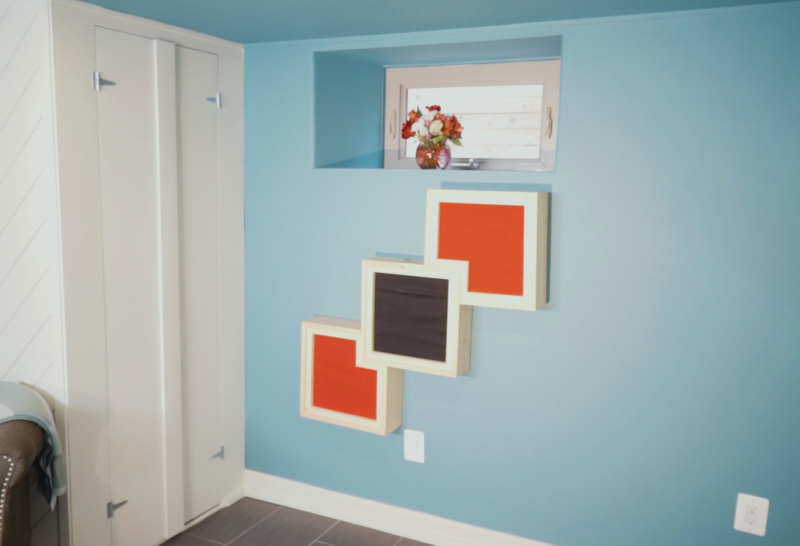
Sound Art. I even added some sound deadening wall art to the space. This was a surprise inspiration and turned into a project—unlike wall studs for example—that I get to directly enjoy every day. You can watch my woodworking wall art video here. Finished basement fun.

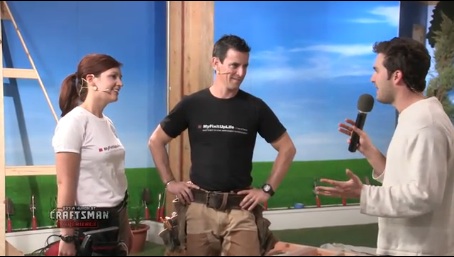
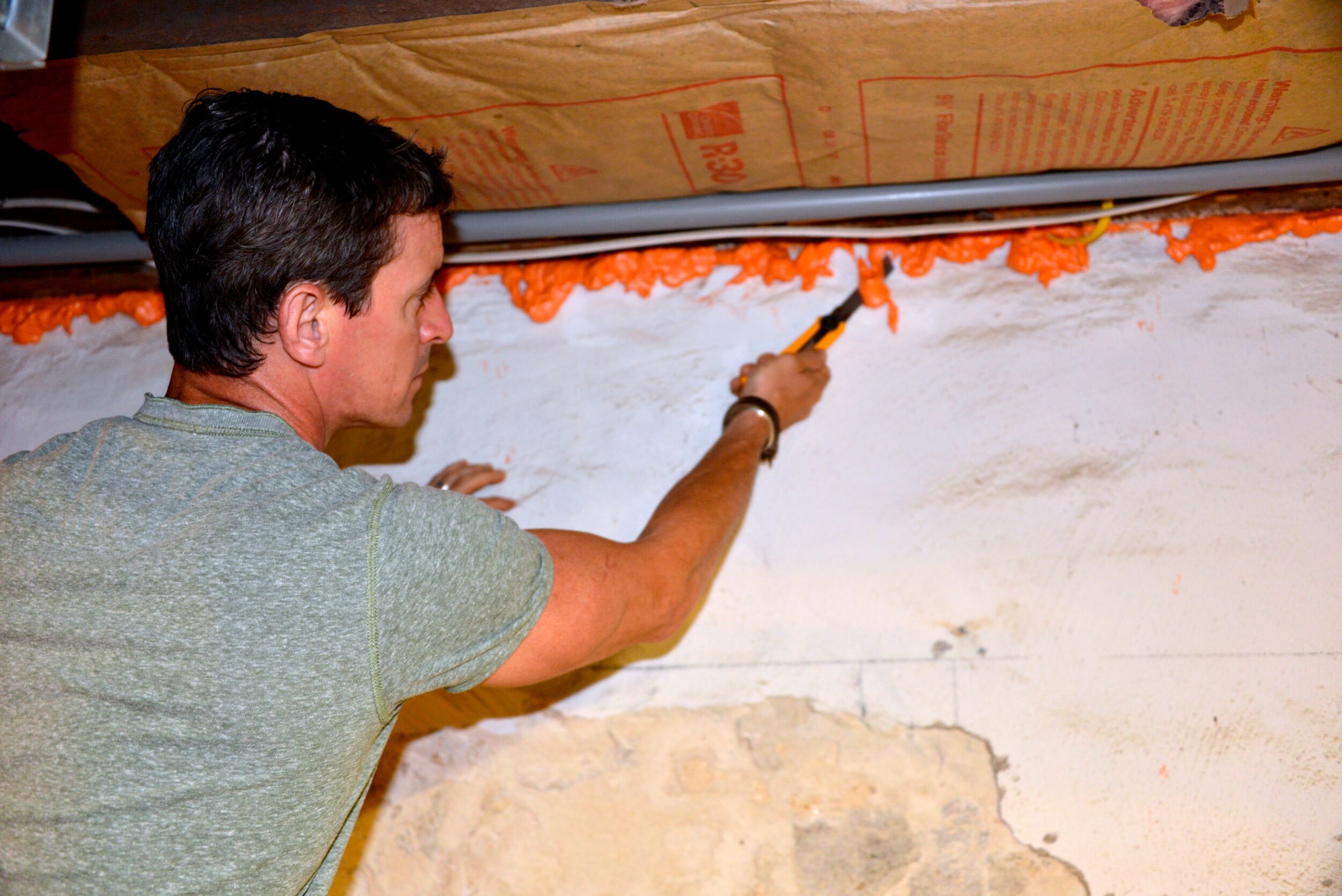

By Mark •, thanks so much for the post.Really thank you! Keep writing.helpwithmath